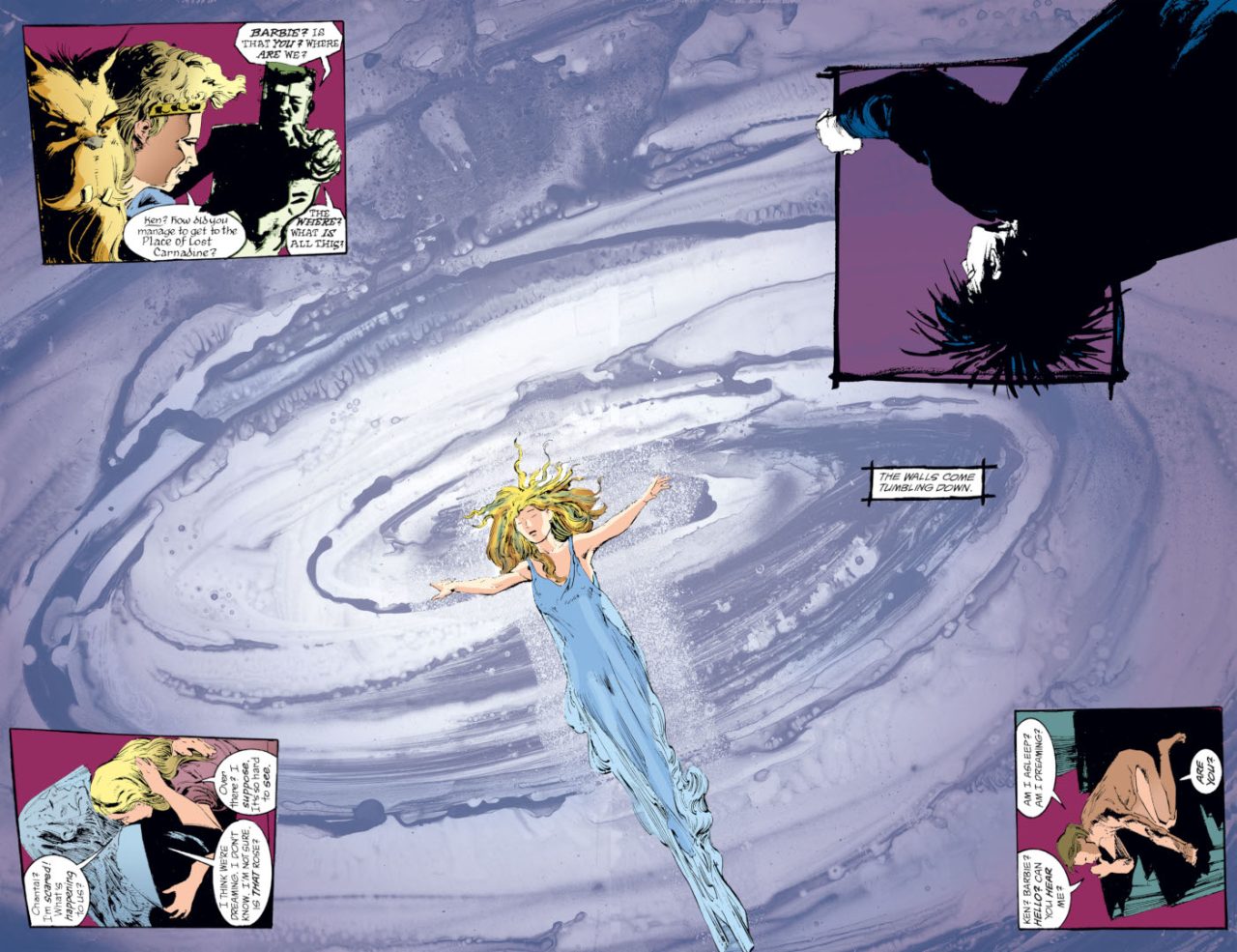How not to adapt a comic

The Sandman is a pretty mediocre TV show, but what’s more interesting is that this is due in large part to it being a terrible comics adaptation. The reason The Sandman is such a good comic is that it exploits the specific possibilities of comics as a form. Because they’re specific to the form, these features of the comic cannot be directly translated to a TV show; the challenge of adaptation is to find analogous modes of expression which work with the TV form. The show is so bland because it never finds such modes of expression, and indeed it rarely tries.
Maybe the clearest example of a formal device that’s specific to The Sandman as a comic is how the way the Endless are coloured. This pure white being, of course, the same colour as the paper on which the comic is printed, it makes the endless appear as absences, as cut out from scene rather than present in it, thereby emphasising their alienness. It’s impossible to duplicate this formal effect on television, and anyway, you probably shouldn’t try; the whiteness as lack of ink is never entirely distinguishable from racial whiteness in the comics, and its good to get away from the idea that the fundamental forces of the universe are somehow metaphysically white people. It’s disappointing, though, that the TV show doesn’t even attempt to find a way of representing the otherness of the Endless; Dream is just some bloke with a bad haircut.
A more complicated example of the show’s weaknesses in adaptation across forms is in the episode “24/7”, in which we see influence of Dream’s magic on a snapshot of characters gathered in a rural diner. In the comic, this is a single issue, and it demonstrates one of the necessities, and the strengths, of the monthly comic. With only 20 pages to play with, comics often work with thumbnail sketches rather than detailed backstories, and the economy with which the issue establishes the characters as types is impressive. A TV episode has a different temporality, and the adaptation of “24/7” uses this to spend more time showing the characters. Unfortunately, this turns out to be a poor choice: spending more time with these types just makes it more apparent that they are types, not real characters; the simplifications, necessary in the brevity of a comic issue, become aggravating cliches over the course of a TV episode. The story is fundamentally a story about types, so it’s a great fit for the comic format; to try and adapt that as a character drama without altering the structure of the story is to fundamentally misunderstand what kind of story you are telling, and what formal tools you would need to tell other kinds of stories.
It’s intriguing that the TV show doesn’t seem to understand what made the comic work; the comic is traditionally attributed to Neil Gaiman, Sam Kieth and Mike Dringenberg (although there were many other artists involved over the course of the series), and of these only Gaiman is involved in the TV adaptation (the substitution of the two artists for the industry’s favourite safe pair of hands, David S. Goyer, does not bode well for the imaginativeness of the adaptation). Perhaps one could evaluate the TV show, not so much as an adaptation of the Sandman comic, but as a retelling of the Sandman narrative. Unfortunately, re-reading the comics, it’s clear that the narrative is the weakest part of the original. I find it frequently trite, and maybe that’s just a matter of taste, but I think what’s less debatable is that it’s very of its time. The Sandman is a story about stories, which was all the rage in the 90s, presumably a result of the popular diffusion of post-modernism. This kind of story is interested in narrative as a source of meaning, often to such an extent that it implies (as The Sandman frequently does), that narrative is the only source of meaning; that to mean something just is to be interpellated into a narrative.
What I wonder, though, is if this 90s obsession with narrative wasn’t actually an appearance of the Owl of Minerva at dusk: a desperate interest in stories just as narrative was being dethroned from its position of cultural pre-eminence. It would, I think, be hard to deny that the development of the internet, and social media especially, has increased the prominence of media forms where a linear narrative is, at best, beside the point (even in forms where the linear narrative is at least theoretically still present). Looking back at The Sandman from this vantage point, its circling around stories about stories seems a little irrelevant, a proud but unwitting presentation of a baffling cultural curio. But that does pose a problem for a contemporary version of The Sandman which the TV show is unaware of and probably incapable of responding to: what would the formal methods for a story, not about the god of stories, but about the god of posts.

